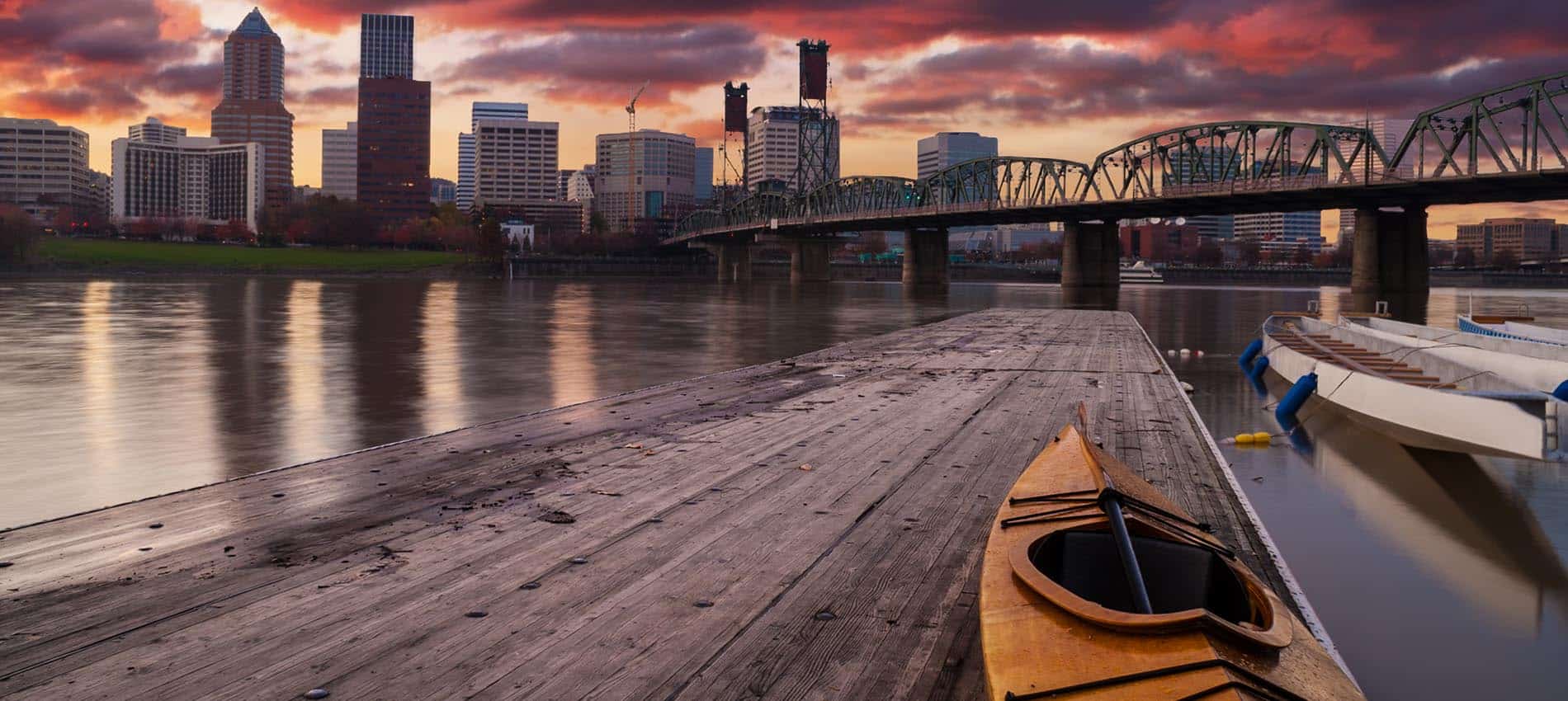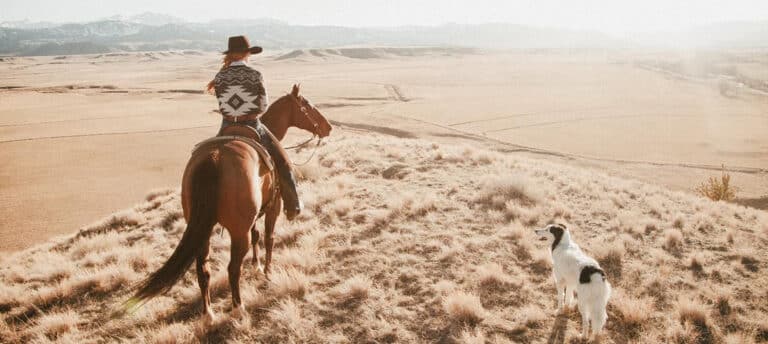In much of the U.S., you don’t have to go far from a city to enjoy nature. In fact, many of the nation’s urban areas offer an abundant scope for recreation on both land and water, as well as opportunities to spot a variety of wildlife within city limits.
Here, from west to east, are our picks for large and mid-sized cities with the most to offer in terms of outdoor adventure.
Anchorage, Alaska
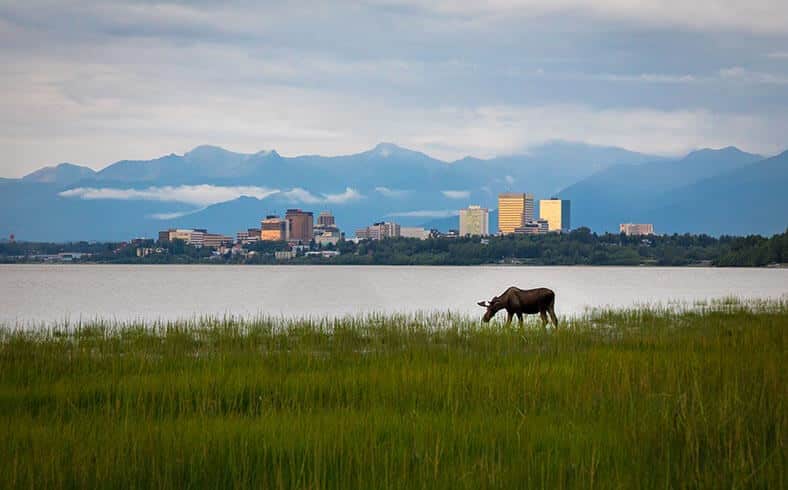
Nature is never far away in Alaska’s largest city, where moose frequently wander through downtown streets, black bears and bald eagles visit regularly, and beluga whales are often spotted in Turnagain Arm. The 11-mile Tony Knowles Coastal Trail runs along Cook Inlet from downtown to the 1,400-acre Kincaid Park; on clear days, the gorgeous views include North America’s highest mountain: Denali. Hiking opportunities abound in Chugach State Park, which covers nearly half a million acres and is almost entirely within the Anchorage municipal area.
Five species of salmon return annually to Anchorage’s rivers and are easily seen in downtown Ship Creek, which has outstanding king salmon fishing from late May through July, followed by silver (coho) salmon from late July to early September. Other fish in Anchorage’s rivers include rainbow trout, Dolly Varden, and Arctic grayling. Little Campbell Lake in Kincaid Park is popular for trout fishing.
South of town, the Anchorage Coastal Wildlife Refuge at Potter Marsh is a great place to see migratory and nesting birds, as well as spawning salmon, bald eagles, moose, muskrats, and beavers.
Seattle, Washington
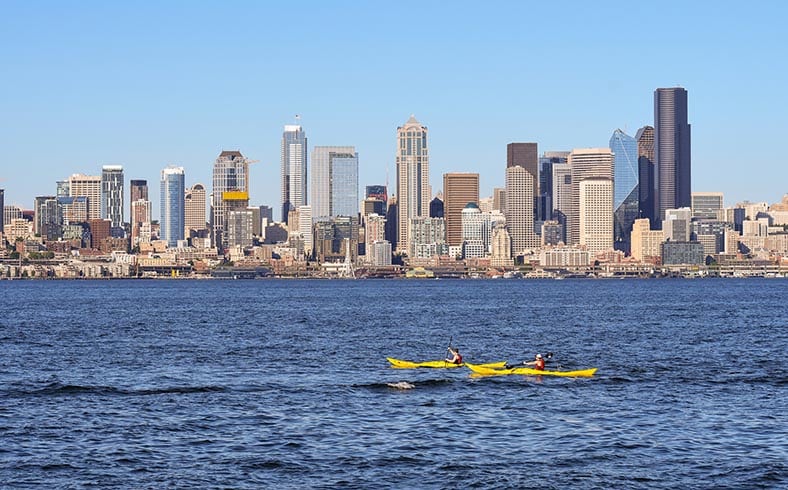
Sandwiched between Puget Sound and Lake Washington, with plentiful green space and the Cascade Mountains nearby, Seattle has it all when it comes to the outdoors. A 2.8-mile hiking trail loops through Discovery Park, which protects 534 acres of forest, meadow, beach, and bluffs, with sweeping views of Puget Sound and the Olympic Mountains.
The Lake Washington Ship Canal links Puget Sound to Lake Washington, creating a network of waterways ideal for paddling. A good place to explore on both land and water is the University of Washington’s Union Bay Natural Area, one of Seattle’s best birdwatching spots. Across the bay, the Washington Park Arboretum has 230 acres of woodlands, gardens, and waterfront habitat. Another good place for birds, Seward Park is home to the city’s largest stand of old-growth forest.
Bald eagles are regularly sighted along Seattle’s waterways. In summer, salmon can be seen making their up the fish ladder at the Ballard Locks as they migrate from the ocean to inland lakes and rivers. The multi-use Burke-Gilman Trail runs from Ballard to the north end of Lake Washington, connecting to the Sammamish River Trail and East Lake Sammamish Trail for a total of over 42 miles.
Portland, Oregon
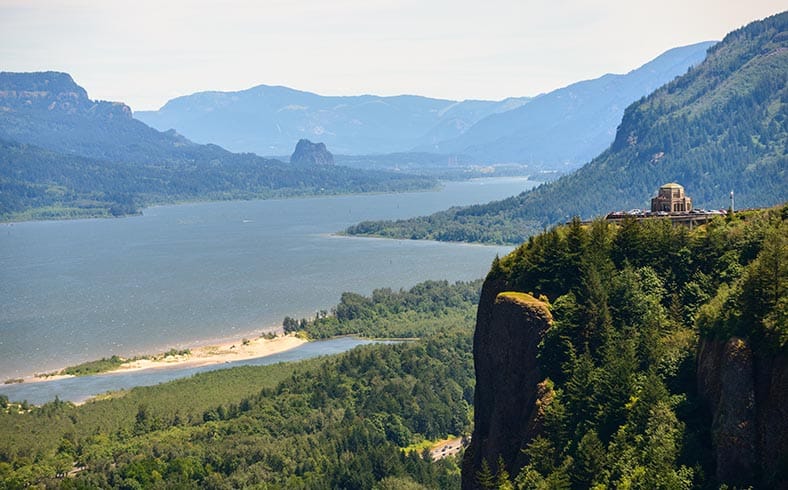
Another Pacific Northwest metropolis with a deep outdoor bent, Portland straddles the Willamette River, offering paddling opportunities within sight of downtown. To the east rises Oregon’s highest peak, the 11,250-foot Mount Hood, while to the north, one of the west’s great rivers, the Columbia, wends its way toward the Pacific. The scenic Columbia River Gorge, with gorgeous waterfalls, trails, and world-famous windsurfing and kiteboarding, is just a half hour away.
In the hills west of downtown, Washington Park is Portland’s green heart, with a renowned rose garden, an arboretum, and stunning views of the city and Mount Hood. The 30-mile Wildwood Trail connects Washington Park with mossy Forest Park, a 5,156-acre urban wilderness with 70 miles of trails and abundant wildlife.
Four national wildlife refuges ring the Portland-Vancouver metro area, providing essential habitat along the Pacific Flyway for nearly 200 species of birds.
San Diego, California
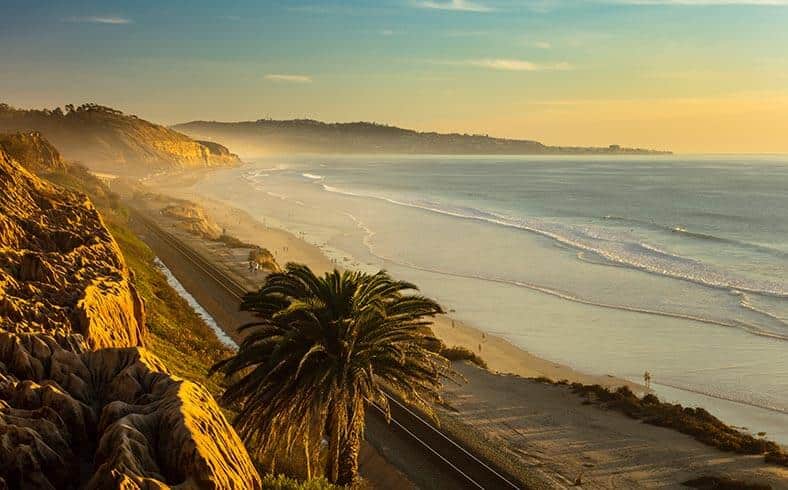
With 70 miles of coastline ranging from gorgeous sandy beaches to rocky bluffs and reefs, San Diego offers everything a water-lover could want: swimming, sailing, kayaking, paddleboarding, jet skiing, sport fishing, scuba diving, and surfing. Inland are foothills, mountains, and desert, perfect for hiking, mountain biking, horseback riding, and rock climbing.
Enormous Mission Bay Park has 27 miles of shoreline, with sandy beaches, nearly 14 miles of bike paths, and a network of waterways with endless recreational possibilities. Further up the coast, Torrey Pines State Natural Reserve is a 1,750-acre wilderness of sandstone canyons and pine forests overlooking beautiful Torrey Pines State Beach. Eight miles of trails wind through the reserve and whales and dolphins can sometimes be seen from the shore.
The San Diego National Wildlife Refuge Complex protects more than 17,000 acres in four units in and around the city. Hundreds of species of birds inhabit diverse habitats, including woodlands, grasslands, marshes, subtidal and intertidal areas, and beach dunes. In spring, wildflowers cloak the canyons and slopes of the San Miguel and McGinty Mountains.
Boise, Idaho

With mountains, the Boise National Forest, and high desert at its doorstep, Idaho’s capital is an outdoor recreation hub. The Boise River runs right through downtown, providing easy access to one of the state’s best paddling routes. Boise Whitewater Park is the place to go for wilder water fun, such as river surfing and whitewater kayaking. Rafting outfitters offer guided excursions on several outstanding whitewater rivers in the region.
The 25-mile Boise River Greenbelt pedestrian and bicycle path links parkland in the city center, while in the outskirts the Ridge to Rivers trail network covers 190 miles through the foothills. A 40-minute drive from downtown up a winding road, the Bogus Basin Mountain Recreation Area offers hundreds of additional miles of hiking and mountain biking trails, as well as snow sports in winter. There’s also good fishing, hunting, horseback riding, climbing, and bouldering in and around the city.
South of town, the Snake River Birds of Prey National Conservation Area is a year-round birding destination, especially in spring, when it has North America’s highest concentration of nesting raptors, including falcons, kestrels, eagles, harriers, osprey, and hawks.
Tucson, Arizona
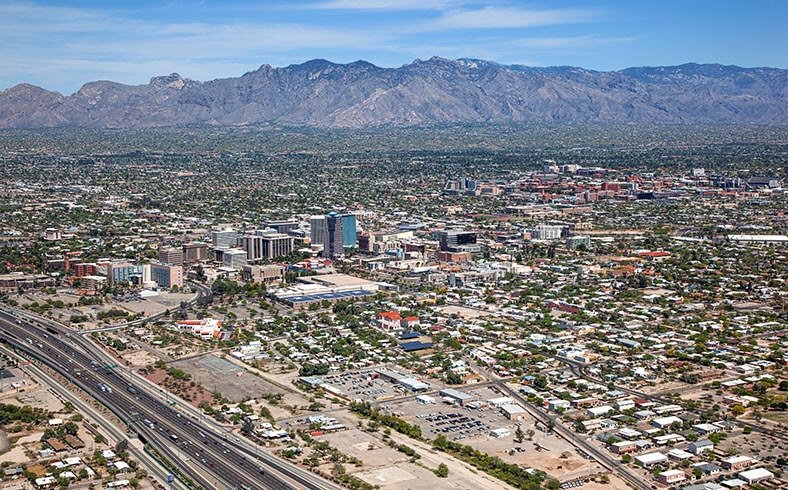
In the heart of the Sonoran Desert, Tucson is surrounded by mountains and flanked by the two distinct units that make up Saguaro National Park, which was named for large stands of the Southwest’s most iconic cactus. The road to the park’s more accessible western unit winds over the Tucson Mountains, which block out city lights at night for spectacular stargazing. On the opposite side of town, the rugged Rincon Mountains are mostly wilderness; the eastern unit of Saguaro National Park has no services but offers good hiking for the well-prepared.
Recently completed, the 131-mile Chuck Huckelberry Loop circles the city and is open to non-motorized traffic. Northeast of Tucson, the foothills of the Santa Catalina Mountains are popular for hiking, cycling, and horseback riding. The Catalina Highway winds up 9,157-foot Mount Lemmon, passing through various ecosystems – like driving from Mexico to Canada in just 27 miles.
Occupying a riparian corridor along Sabino Creek, filled with hummingbirds, cactus wrens, and other wildlife, Sabino Canyon Recreation Area has more than 30 miles of trails. The canyon is closed to vehicle traffic but open for hiking, bicycling, and horseback riding; a shuttle runs from the visitor center to various trailheads.
Albuquerque, New Mexico
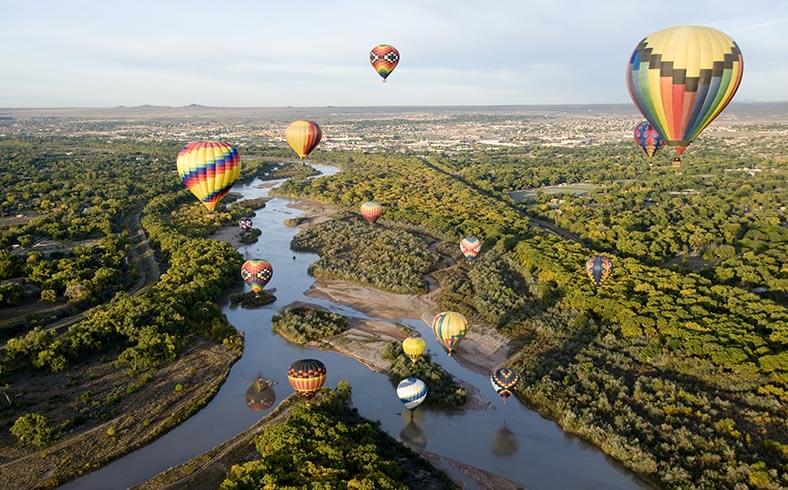
Located along the Rio Grande, Albuquerque is a mile-high city with abundant parkland and an extensive network of bike lanes and trails, from the 16-mile riverside Paseo del Bosque to mountain bike routes in the foothills of the Sandia Mountains, which top out at 10,678 feet. There’s excellent hiking, as well, through vegetation ranging from cactus and sage to evergreen forests at higher elevations.
The multi-use 50-Mile Activity Loop starts downtown and passes through various landscapes as it crosses the Rio Grande and ascends toward the mountains before returning downhill and back into town. For those who prefer watersports, there’s rafting, kayaking, and paddleboarding on the Rio Grande. In winter, there’s skiing and snowboarding at nearby Sandia Peak.
Albuquerque’s diverse habitats also attract a great variety of birds. Some 200 species, along with other wildlife, may be spotted at the Rio Grande Nature Center. The Valle de Oro National Wildlife Refuge protects 570 acres on the river’s east bank and has gorgeous mountain views. At Petroglyph National Monument, just west of the city, visitors can walk among ancient lava flows and see rock carvings dating back hundreds of years.
Austin, Texas
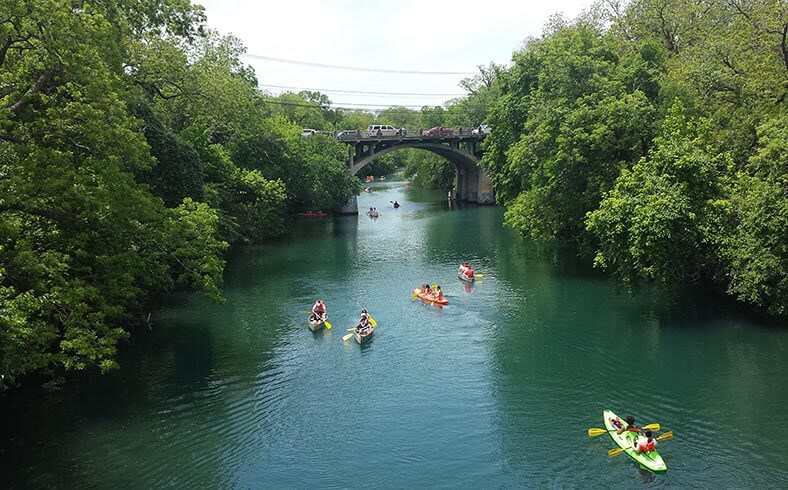
Situated in the heart of Hill Country, Austin is one of the best cities in Texas for outdoor recreation. Downtown, Lady Bird Lake is popular for kayaking, canoeing, paddleboarding, and walking, jogging, or biking on the lakeside trail. Fishing is permitted in various city waterways; good spots include Lake Austin and Red Bud Isle south of Tom Miller Dam. There’s year-round swimming in Zilker Park at Barton Springs Pool, which is fed by underground springs and maintains an average temperature of 68 to 70 degrees.
Austin also has more than 190 miles of hiking and biking paths. The Barton Creek Greenbelt is a nearly eight-mile-long nature reserve with waterfalls, natural swimming holes, native vegetation, and sheer limestone cliffs that are popular with climbers. Five miles from downtown, the limestone heights of 775-foot Mount Bonnell reward those who climb the 99 steps to the summit with stunning views across the Colorado River.
Beneath the Congress Avenue Bridge lives the world’s largest urban bat colony, numbering nearly 1.5 million animals. Their nightly emergence around sunset from March through October is one of the country’s great urban wildlife spectacles.
Minneapolis/St. Paul, Minnesota
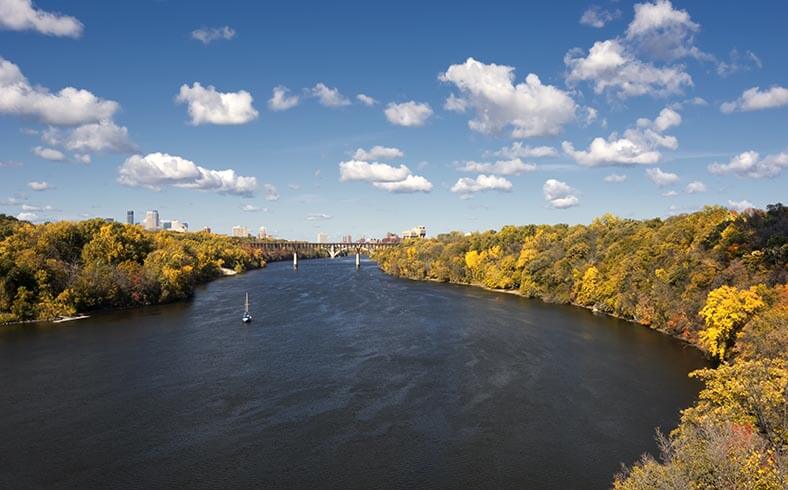
Given Minnesota’s nickname, “Land of 10,000 Lakes,” it’s hardly surprising that water plays a big role in the Twin Cities’ recreation. Canals connect downtown lakes to form Chain of Lakes Regional Park, which offers swimming, paddleboarding, canoeing, sailing, lakeside trails, and more. In addition to regular equipment rentals, there’s a paddle-share program with numerous docking stations.
Abundant parkland and more than 400 miles of dedicated bike lanes and trails make cycling extremely popular in Minneapolis and St. Paul – even in winter, when bike paths are often plowed before streets. Winter is also a great time for cross-country skiing, snowshoeing, ice skating, and ice fishing in the cities’ many parks.
The Mississippi National River and Recreational Area extends 72 miles through the heart of the metropolitan area, providing outstanding opportunities for boating, canoeing, walking, hiking, birdwatching, and fishing. Near the airport and the Mall of America, the Minnesota Valley National Wildlife Refuge spans 14,000 acres along a 70-mile stretch of the Minnesota River, providing habitat for fish, migratory waterfowl, river otters, and other wildlife.
Chattanooga, Tennessee
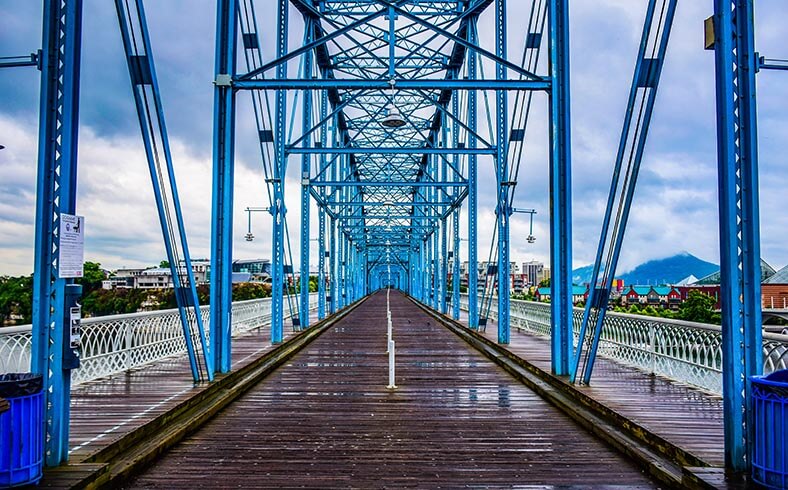
The Tennessee River winds through Chattanooga, a mid-sized city with big adventure potential. There’s good paddling right downtown, as well as a 13-mile paved urban trail, known as the Riverwalk, along the river. Cycling enthusiasts will also find many miles of scenic roads, paths, and mountain biking routes within easy reach.
The Audubon Society manages two wildlife sanctuaries in Chattanooga: Audubon Acres along South Chickamauga Creek and Maclellan Island near downtown. Both make good urban escapes for birdwatching and nature walks. Further up the Tennessee River, Booker T. Washington State Park is one of the Chattanooga area’s top fishing spots for bass, catfish, and other species.
One of the river’s tributaries, North Chickamauga Creek, has carved out a steep, 10-mile gorge through a sandstone plateau 15 miles north of downtown. Hiking, rock climbing, whitewater kayaking, and canoeing are popular activities in the area. West of the city, the 6,000-acre Prentice-Cooper State Forest has over 35 miles of hiking trails. To the south, straddling the Georgia border, rises 2,392-foot Lookout Mountain. Views from the summit span seven states.
Cleveland, Ohio
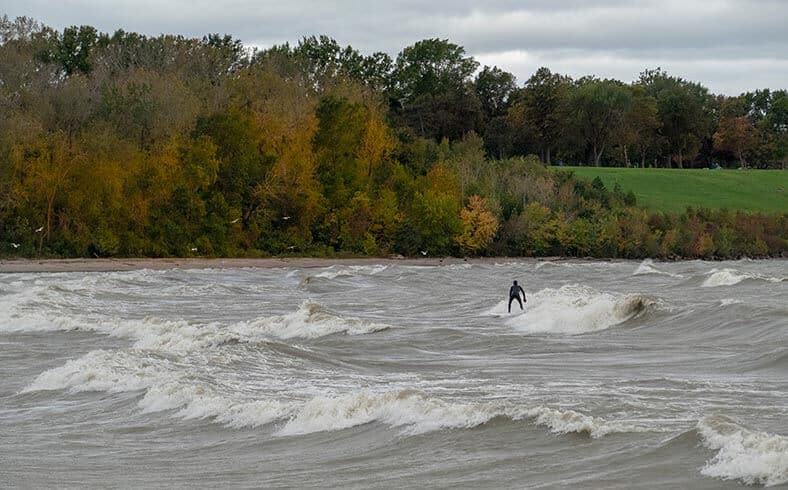
Once known for industrial grit and pollution, Cleveland has undergone a renaissance in recent decades. With a shoreline along Lake Erie and a park system that encompasses 18 reservations, Ohio’s second-largest city offers plenty of scope for outdoor adventure. The Cleveland Metroparks network has hundreds of miles of trails for hiking, walking, and biking, as well as opportunities for horseback riding, water sports, and nature exploration. There are also 13 major fishing areas with diverse species.
A top steelhead fishing location, the Rocky River Reservation follows the winding course of its namesake river as it cuts a scenic gorge through Cleveland’s western suburbs. It’s one of 28 Cleveland-area locations on the Lake Erie Birding Trail, which also includes the Cleveland Lakefront Nature Preserve, where approximately 280 bird species have been recorded. Another highlight is the the North Chagrin Reservation, a 1,700-acre wildlife sanctuary and recreation area.
The multi-use Ohio & Lake Erie Canal Towpath Trail runs south from Cleveland, passing through Cuyahoga Valley National Park, a landscape of woods, waterfalls, and ancient rock formations carved by the flow of the Cuyahoga River. The Cuyahoga and Chagrin Rivers are both state-designated scenic rivers for paddling.
Virginia Beach, Virginia
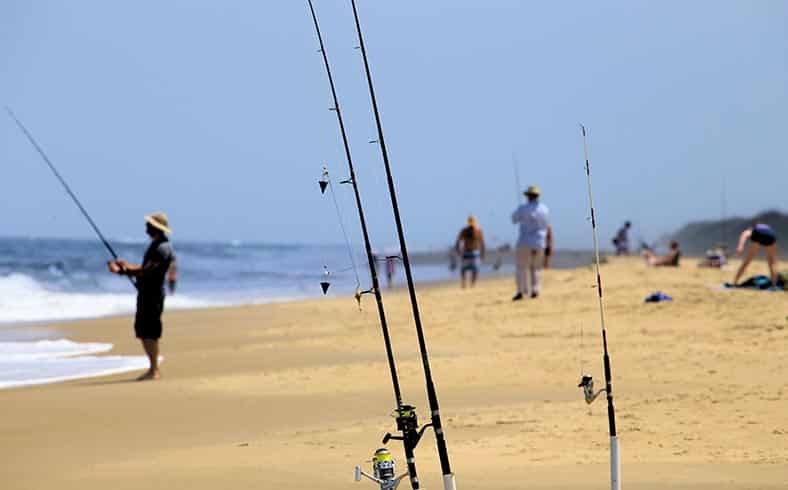
Located at the mouth of Chesapeake Bay, Virginia Beach is a coastal playground with a mild climate, more than 4,000 acres of parks and refuges, and over 120 miles of waterways. The coastline and sheltered bays are ideal for exploration by kayak, while hikers and bikers will find many miles of trails through unspoiled beaches, wetlands, and forests.
Dolphins are present in the area year-round and are frequently spotted in Chesapeake Bay and inland waterways. Wildlife boat tours operate from May to October. Thanks to Virginia Beach’s mix of water habitats, there’s excellent fishing for a variety of species, including bluefish, flounder, trout, mackerel, tuna, marlin, and more.
The Back Bay National Wildlife Refuge and adjacent False Cape State Park protect coastal landscapes, including barrier islands, dunes, woodlands, freshwater marshes, and ponds. This diversity attracts more than 300 species of resident and migratory bird species along with other wildlife, including river otters, white-tailed deer, mink, and foxes. Threatened loggerhead sea turtles come ashore to nest in late spring and summer. More than 10,000 snow geese can be seen at False Cape during the annual migration.
